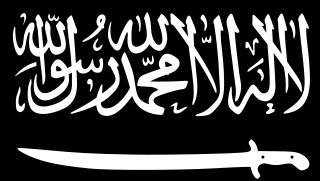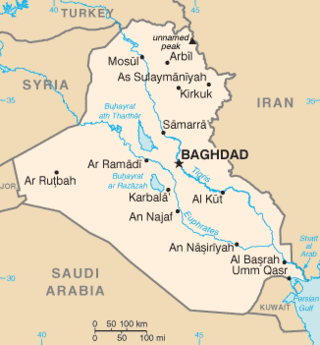
The Arctic Archipelago, also known as the Canadian Arctic Archipelago, is an archipelago lying to the north of the Canadian continental mainland, excluding Greenland and Iceland.
This is a list of the extreme points of the United Kingdom: the points that are farther north, south, east or west than any other location. Traditionally the extent of the island of Great Britain has stretched "from Land's End to John o' Groats".

The Terek Cossack Host was a Cossack host created in 1577 from free Cossacks who resettled from the Volga to the Terek River. The local aboriginal Terek Cossacks joined this Cossack host later. In 1792 it was included in the Caucasus Line Cossack Host and separated from it again in 1860, with the capital of Vladikavkaz. In 1916 the population of the Host was 255,000 within an area of 1.9 million desyatinas.
In June 2000, the North Caucasian Chechen separatist-led Chechen insurgents added suicide bombing to their tactics in their struggle against Russia. Since then, there have been dozens of suicide attacks within and outside the republic of Chechnya, resulting in thousands of casualties among Russian security personnel and civilians. The profiles of the suicide bombers have varied, as have the circumstances surrounding the bombings.
Terrorism in Russia has a long history starting from the time of the Russian Empire. Terrorism, in the modern sense, means violence against civilians to achieve political or ideological objectives by creating extreme fear.

Vilayat Dagestan, formerly known as Shariat Jamaat, was an Islamist Jihadist group based in the Russian republic of Dagestan and is part of the Caucasus Emirate. The group is closely associated with the separatist conflicts in the nearby Russian republics of Chechnya and Ingushetia, and was created during the Second Chechen War in favor of Dagestan's independence as an Islamic state.

The Caucasus Emirate, also known as the Caucasian Emirate, Emirate of Caucasus, or Islamic Emirate of the Caucasus, was a jihadist organisation active in rebel-held parts of Syria and previously in the North Caucasus region of Russia. Its intention was to expel the Russian presence from the North Caucasus and to establish an independent Islamic emirate in the region. The Caucasus Emirate also referred to the state that the group sought to establish. The creation of Caucasus Emirate was announced on 7 October 2007, by Chechen warlord Dokka Umarov, who became its first self-declared "emir".

Riyad-us Saliheen was the name of a small "martyr" (shahid) force of suicide attackers. Its original leader (amir) was the Chechen separatist commander Shamil Basayev. In February and March 2003, the group was designated by the United States and subsequently by the United Nations as a terrorist organization. After several years of inactivity, Riyad-us Saliheen was reactivated by the Caucasus Emirate in 2009 under the command of Said Buryatsky; following his death, Aslan Byutukayev became its new leader.

The insurgency in the North Caucasus was a low-level armed conflict between Russia and militants associated with the Caucasus Emirate and, from June 2015, the Islamic State, in the North Caucasus. It followed the official end of the decade-long Second Chechen War on 16 April 2009. It attracted volunteers from the MENA region, Western Europe, and Central Asia. The Russian legislation considers the Second Chechen War and the insurgency described in this article as the same "counter-terrorist operations on the territory of the North Caucasus region".

The 2009 Nazran bombing occurred on 17 August 2009, in Nazran, the largest city of the Republic of Ingushetia in the Russian Federation. A suicide car bomber attacked police headquarters, and at least 25 people were killed and 164 injured. It was the most serious terrorist attack in Ingushetia in the early 21st century, where there had been social and political unrest related to independence movements.

Potiskum is a local government area and city in Yobe State, Nigeria. It's the largest, most populous and fastest growing city in Yobe State. Of the native languages in Yobe State, Potiskum is home to several major groups which include the Karai-Karai, Bolewa and Ngizim and Hausa-Fulani. It is on the A3 highway at 11°43′N11°04′E. It has an area of 559 square kilometres (216 sq mi).

This article details major terrorist incidents in Iraq in 2008. In 2008, there were 257 suicide bombings in Iraq. On February 1, a pair of bombs detonated at a market in Baghdad, killing 99 people and injuring 200. Two other particularly deadly attacks occurred on March 6, and June 17.

The 2010 Moscow Metro bombings were suicide bombings carried out by two female Islamic terrorists during the morning rush hour of March 29, 2010, at two stations of the Moscow Metro, with roughly 40 minutes in between. At least 40 people were killed, and over 100 injured.

The Domodedovo International Airport bombing was a suicide bombing in the international arrival hall of Moscow's Domodedovo International, in Domodedovsky District, Moscow Oblast, on 24 January 2011.
Aslan Avgazarovich Byutukayev, also known as Emir Khamzat and Abubakar, was a Chechen field commander in the Islamic State (IS) Wilayah al-Qawqaz, the commander of the Riyad-us Saliheen Brigade of Martyrs and a close associate of the deceased Caucasus Emirate leader Dokka Umarov. Byutukayev was listed as a Specially Designated Global Terrorist by the United States on 13 July 2016. He was killed by Russian special operatives in January 2021.

The Chechen–Russian conflict was the centuries-long ethnic and political conflict, often armed, between the Russian, Soviet and Imperial Russian governments and various Chechen forces. The recent phase of the conflict started after the dissolution of the Soviet Union in 1991 and ended with the oppression of Chechen separatist leaders and crushing of the separatist movement in 2017.
Aliaskhab Alibulatovich Kebekov, also known as Ali Abu Muhammad, was a North Caucasian militant Islamist in Russia and the leader of the Caucasus Emirate following the death of inaugural leader Dokka Umarov. Following in the same religious tradition as Umarov, he adhered to the ideology of Salafism. The United States Department of State added Kebekov to its list of Specially Designated Global Terrorists on March 25, 2015. On 19 April 2015, Kebekov was killed by Russian security forces during special operations in the settlement of Gerei-Avlak in Buynaksk. An Avar by nationality, Kebekov was the first non-Chechen to lead the North Caucasus insurgency.

The Kizlyarsky otdel was a Cossack district of the Terek oblast of the Caucasus Viceroyalty of the Russian Empire. The area of the Kizlyarsky otdel makes up part of the North Caucasian Federal District of Russia. The district was eponymously named for its administrative center, Kizlyar.











